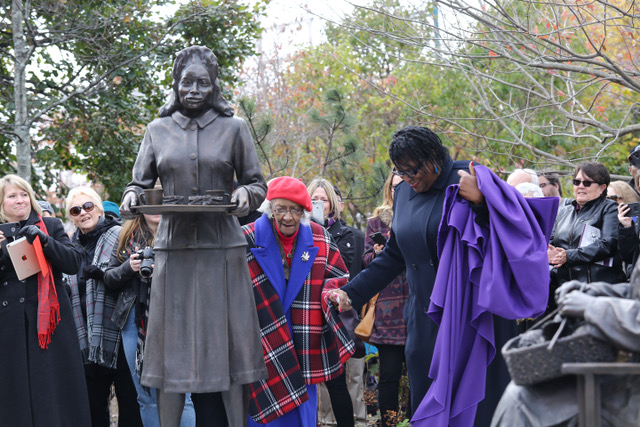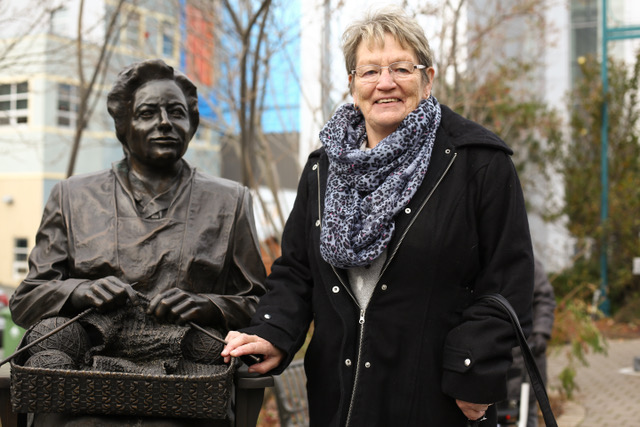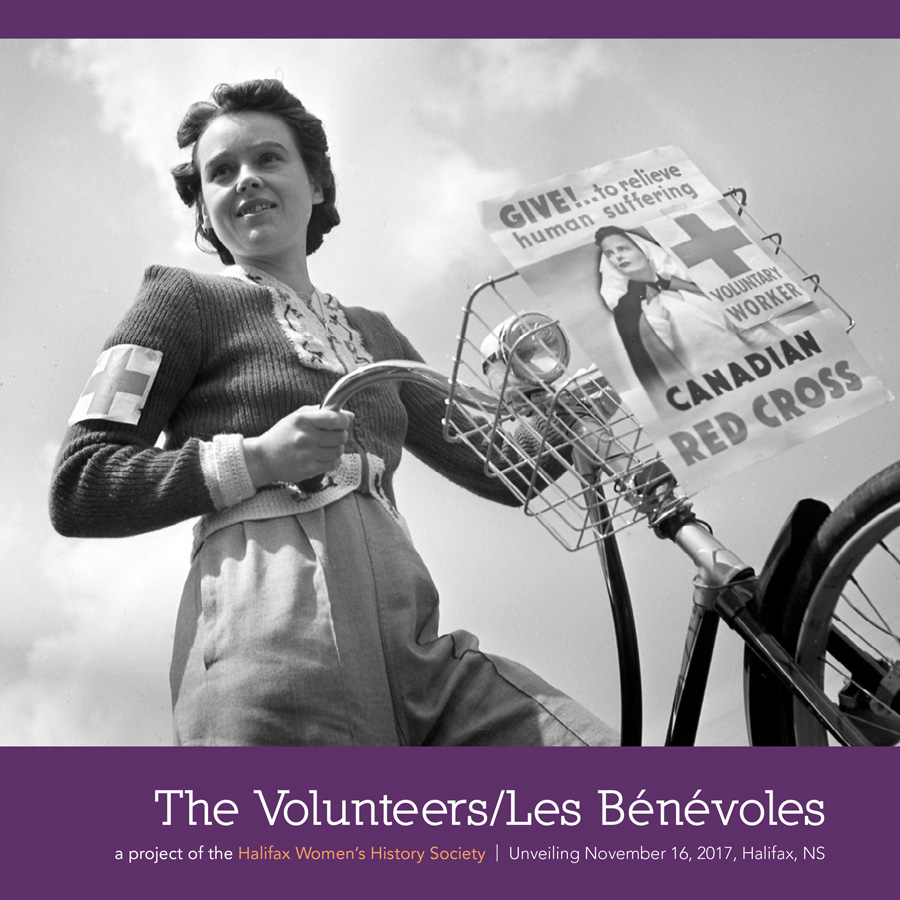The Unveiling
Wanda Lewis, Halifax Women’s History Society member
Watch the Unveiling
Society Breaks the Bronze Ceiling in Halifax
Photos by Bruce Bottomley
Hundreds of people gathered on the Halifax waterfront on Thursday, Nov. 16, 2017 to be part of the unveiling of the monument, The Volunteers/Les Bénévoles. This was an historic event — the first full-sized bronze monument to honor women in Halifax’s history.
The monument, the project of the Halifax Women’s History Society, is comprised of three figures, representing three generations: A young girl pulling a wagon full of salvaged metal, an African-Nova Scotian woman holding a tray of coffee and sandwiches, and an older woman seated with a Mi’kmaq basket and knitting. Read more about the monument design here.
Public art is art in public spaces and it depicts the history of its place and people. The Society began because it was aware of the absence of any statutes or monuments depicting actual women in Halifax.
“This is the first monument to women in the city’s 268-year history,” said Society Chair Janet Guildford. “We’re elated to be the first to break the bronze ceiling in Halifax. History matters in public culture. We sincerely hope others who have been rendered invisible and irrelevant in public art follow us.”
The monument is also the first to feature an African-Nova Scotian woman. The original idea was to have one statute of a woman. As the project evolved, the Society decided to have three figures to span the generations and be inclusive — an older woman, the African Nova Scotian woman and a young girl.
The Halifax Port Authority provided the land for The Volunteers/Les Bénévoles. It’s located just north of the Halifax Seaport Farmers’ Market and next to the monument The Emigrant.
The Society raised about $600,000 dollars from many generous sponsors. They all made the monument a reality.





